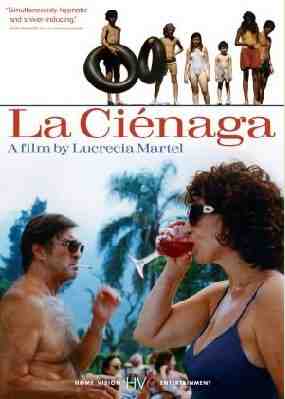La Cienaga(2001)

English title: The swamp
Director: Lucrecia Martel
Language: Spanish
Two cousin sisters struggle with their respective families in the unbearable heat and humidity of an Argentinian summer. Children go hunting, people get drunk, people get hurt, the Virgin appears and still the two families get sucked into the swamp that is their life with each passing day.
From the very first shot till the last, this film is all about the visuals. As the credits roll, the film opens with one of the most amazing opening sequences ever. The camera hovers around a poolside. We see middle-aged people with wrinkled skin, on a drinking spree. Their hands tremble, their words muttered, the stealthy camera shows us a perfect picture of the typical bourgeoisie hedonism in the present Argentinian society and thus sets up the mood for the whole film. Throughout the entire film, the camera moves around with utmost stealth, almost like a voyeur. The children of the two family spend their days by the pool or hunting in the forest or sleeping with the maid or even each other. There's always an anticipation of sexual escapades but it is always overcome by violence. The children get into fights, accidents and hurt themselves. No one around seems to be normal except a little boy and the maid. Interestingly, both of them seem to be confined within abnormality. Every frame suggests that confinement, every shot prepares us for something bad to happen to the normal people. The director uses her camera to take us almost into the minds of the characters. Sometimes, the close up shots are so close that you might just hear the characters think. She makes use of the sounds in a regular household as well as the various silences to suggest the fate of the characters. Apart from the physicality of the whole scenario, we see no one answering the telephone throughout the film and the Virgin only appearing before the poor Indians, thus emphasizing the faithlessness and lack of communication amidst the class differences in the Argentinian society. The mostly amateur cast puts in a strong performance within a seemingly erratic but indeed very tightly bound screenplay. But what really makes this film work is the excellent cinematography. The director says almost everything through the empty spaces, the silences and the few recurring motifs. If not for anything else, this film should be a must watch for an extensive lesson in Mise-en-scène.


0 etceteras:
Post a Comment